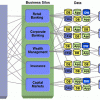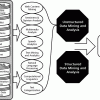Strategic advice to leverage new technologies
Technology is at the heart of nearly every enterprise, enabling new business models and strategies, and serving as the catalyst to industry convergence. Leveraging the right technology can improve business outcomes, providing intelligence and insights that help you make more informed and accurate decisions. From finding patterns in data through data science, to curating relevant insights with data analytics, to the predictive abilities and innumerable applications of AI, to solving challenging business problems with ML, NLP, and knowledge graphs, technology has brought decision-making to a more intelligent level. Keep pace with the technology trends, opportunities, applications, and real-world use cases that will move your organization closer to its transformation and business goals.
Recently Published
In my last Advisor (" 'Click here to Learn This One Crazy Secret...'," 27 January 2011), I dropped the "V" word, "visualization," and it probably hit you like a sack of feathers unloaded from 100 feet in the air.
In my last Advisor (" 'Click here to Learn This One Crazy Secret...'," 27 January 2011), I dropped the "V" word, "visualization," and it probably hit you like a sack of feathers unloaded from 100 feet in the air. What is it about visualization that makes it such an important topic that we choose to take up your time with it ... again?
The subject of this Executive Update may seem odd. I am borrowing an analogy that one of my banking clients uses to describe the requirements for transforming the company's core banking systems. They are the "cardiovascular" IT system for banks -- providing solutions that drive revenue-generating operations, such as account management, deposits, loans, and credit cards. The current core systems are largely product-oriented applications that are 20-plus years old and mainframe-based.
Current Solutions for Unstructured Data
Unstructured data, particularly text, makes up at least 80% of all corporate data and an incalculable amount of potentially relevant data on the Web. As we explore in this Executive Report by Brian J. Dooley, developing the capability to mine these information stores and apply the data to business processes is an imperative.
Current Solutions for Unstructured Data
Unstructured data accounts for some 80% of the data within a corporation and countless amounts of relevant additional information on the Web. This includes data that cannot fit into standard corporate databases and data warehouses and is therefore immune to the BI processing by which companies gain insight into their business and the markets in which they operate.
Some of the biggest obstacles standing in the way of companies wanting to use consumer-oriented social media such as Facebook, Twitter, and LinkedIn for marketing and other purposes have to do with compliance and worries about brand management. This is especially true for financial services and insurance companies, which face considerable scrutiny from government regulatory agencies.













